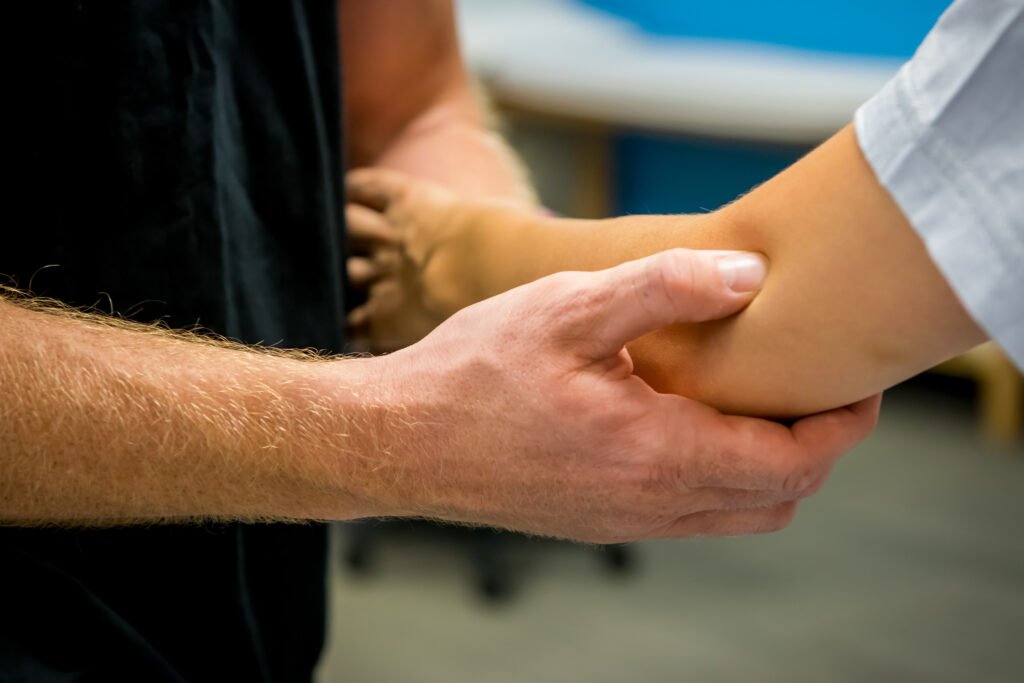
Tennis elbow, or lateral epicondylitis, is a condition caused by inflammation of the tendons on the outer part of the elbow, typically due to repetitive motions of the wrist and arm. While it is commonly associated with racquet sports like tennis, it can affect anyone who performs repetitive gripping or wrist movements, such as carpenters, painters, and office workers.
Physiotherapy plays a crucial role in managing tennis elbow by reducing pain and promoting healing. Treatment focuses on restoring normal muscle function, improving strength and flexibility, and preventing future episodes of the condition.
Physiotherapy helps alleviate the pain and inflammation caused by tennis elbow, while also addressing the underlying biomechanical issues that contributed to the condition. Through personalized exercises, manual therapy, and lifestyle modifications, physiotherapy can facilitate recovery and prevent recurrence.
Reduces pain and inflammation in the elbow
Improves strength and flexibility in the forearm muscles
Corrects poor movement patterns contributing to the condition
Helps prevent recurrence through education and proper technique


Here are some common questions we receive about tennis elbow and our physiotherapy treatments:
Tennis elbow is caused by overuse of the muscles and tendons around the elbow joint, typically through repetitive wrist and arm motions. It is commonly seen in individuals who play racquet sports or perform repetitive manual tasks like typing, hammering, or painting.
Physiotherapy helps by reducing pain and inflammation, improving muscle strength and flexibility, and correcting any movement patterns that may have contributed to the condition. Treatment may include manual therapy, exercises, and advice on activity modification.
Recovery time depends on the severity of the condition and the individual's adherence to treatment. With effective physiotherapy, most patients experience significant improvement within 6-12 weeks, although full recovery may take longer for some.
During physiotherapy, you can expect a customized treatment plan tailored to your needs, focusing on relieving pain, restoring function, and preventing future injury. This may include hands-on techniques, strengthening exercises, and advice on how to modify your daily activities.


